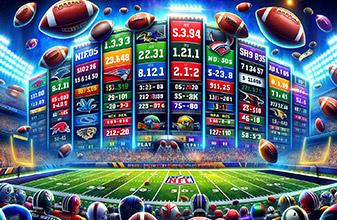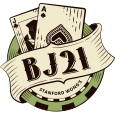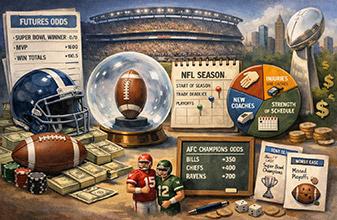NFL Parlay Cards

King Yao is the author of Weighing the Odds in Hold‘em Poker, and Weighing the Odds in Sports Betting. He uses his experience in financial derivative markets and translates it into gambling. Since he left his trading position in 2000, he has been playing poker and betting on sports. He travels to Las Vegas frequently, especially during football season. This is part of an occasional series of articles that provide prospective sports bettors with some of the basic principles of sports betting.
Most sportsbooks in Nevada offer parlay cards. These are cards with preset lines for the week’s football games, and listed parlay odds for different numbers of teams picked.
Lines on the board may move, but lines on the parlay cards do not change. If a line moves a lot, the sportsbook eliminates that game from use on a parlay card.
The odds on the parlay cards are set to the advantage of the sportsbook. It is usually a nice profit center in the sportsbook due to the horrible odds offered. But square players still like them because of the lottery mentality of a possible big payoff. Even with the bad odds, there are still some possible positive EV situations.
Parlay cards come in different variations. Casinos offer parlay cards that differ in lines, odds and rules. Be careful in checking all of these issues, which are printed on the back of the card. I will use an example of a 3-team parlay that pays 6.5 for 1 throughout this section. With a few adjustments, you should be able to calculate the numbers for any other variation.
The payoff offered for 3-team parlays is usually no better than 6.5 for 1. Often the odds are worse, but let’s use an optimistic example. If you win, the casino will give you $6.50 for every $1 that you bet. This is different than the way sportsbooks state their odds for most other bets. $1 out of the $6.50 is the amount you paid to make the wager. In other words, a 6.5 for 1 payoff really means odds of 5.5 to 1. This can be misleading and many square bettors fall for it without realizing it.
Break-Even Rates
First, convert the odds into a break-even winning percentage. 6.5 for 1 converts to a break-even winning percentage of 15.4% (1/6.5).
Second, convert this break-even winning percentage to an equivalent winning percentage on the three games. Since there are three teams, take the cube root of 15.4%. This is not as scary as it sounds; the formula in Excel is =(1/6.5)^(1/3). The answer is 53.6%. You need to be able to win each game at the rate of 53.6% in order to break even to the odds on the parlay card. This is higher than the 52.4% break-even rate on straight bets at -110.
This process can be used to evaluate the equivalent break-even winning percentage for parlays with more teams too. Here is an example of a 4-team parlay that pays 11 for 1.
The break-even winning percentage for a 4-team parlay paying 11 for 1 is 9.09% (1/11). Next, find the equivalent winning percentage on the four games. Take 9.09% to the (1/4) power (9.09% ^ (1/4)) and the answer is 54.9%.
The payoff for a 4-team parlay that pays 11 for 1 is worse than the payoff for a 3-team parlay that pays 6.5 for 1 because you need a higher winning percentage per game in order to break even with the 4-team parlay.
This is part of an occasional series of articles.
Excerpted with permission from the e-book version of Weighing the Odds in Sports Betting by King Yao, edited for this format.











Please log in or register to leave a comment